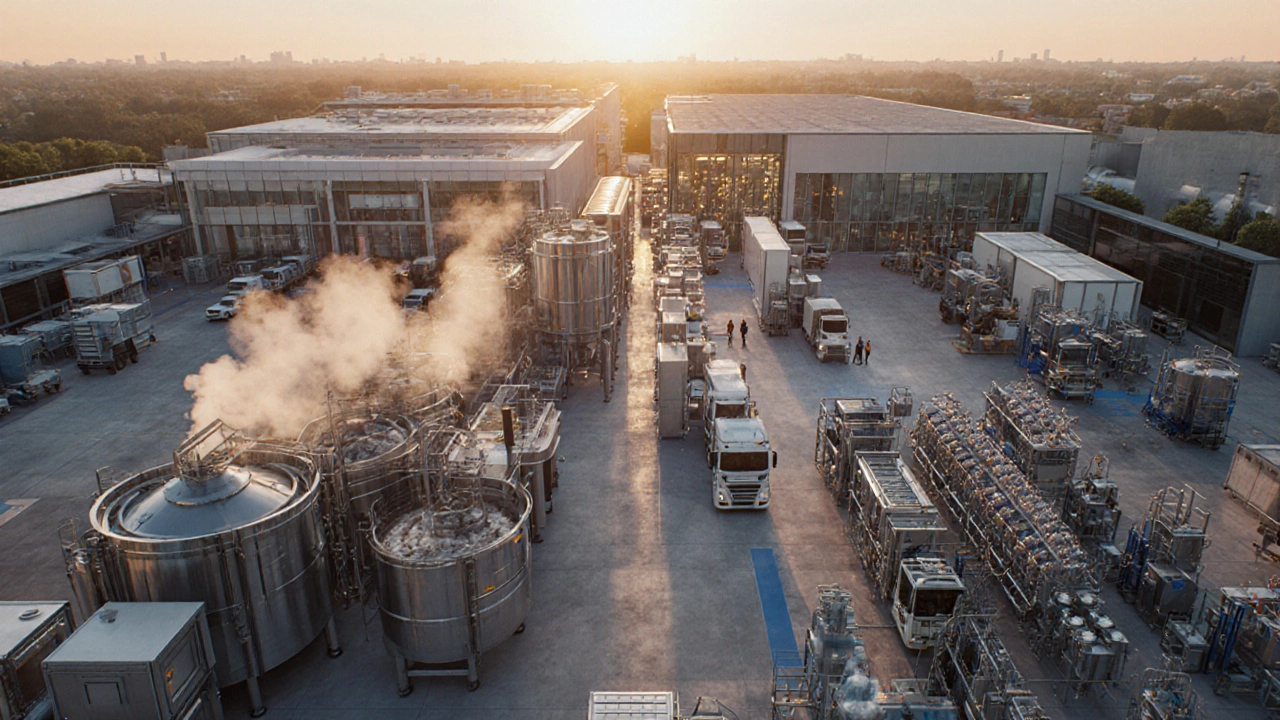Food Industry Units Explained
When talking about food industry units, the collection of facilities that turn raw ingredients into safe, market‑ready food products and manage their distribution. Also known as food processing facilities, they include everything from small bakeries to massive multinational plants.
One of the most visible parts of these units is food processing plants, facilities where raw agricultural goods are cleaned, cooked, mixed, and packaged. These plants rely heavily on plastic packaging, lightweight, durable containers that protect food from contamination and extend shelf life. The choice of packaging often determines the product’s market appeal and compliance with food safety standards.
Key Components of Food Industry Units
Behind the scenes, chemical suppliers, companies that provide preservatives, flavor enhancers, and cleaning agents, play a crucial role. Their inputs help maintain product quality and meet hygiene regulations. Without reliable chemicals, a processing plant can’t guarantee safety, which in turn affects the entire supply chain.
Another cornerstone is sustainable manufacturing. Modern food industry units are pressed to reduce waste, lower energy use, and adopt circular practices. When a plant integrates eco‑friendly processes, it not only cuts costs but also meets growing consumer demand for greener products.
Cost structure is a constant worry. Recent data shows that raw material costs, especially plastics and chemicals, often outpace labor expenses. Understanding which expense dominates helps managers prioritize automation or negotiate better supplier contracts.
Technology drives efficiency too. Automation, IoT sensors, and AI‑based quality checks allow food industry units to monitor temperature, humidity, and contamination risk in real time. These tools create a feedback loop that improves product consistency and reduces downtime.
Regulatory compliance threads through every step. Units must align with local food safety laws, international standards like ISO 22000, and packaging regulations that limit certain plastics. Failure to comply can halt production and damage brand reputation.
Market trends push units toward diversification. Today’s consumers look for ready‑to‑eat meals, plant‑based alternatives, and personalized nutrition. Food industry units respond by adding new production lines, adjusting recipes, and redesigning packaging to stand out on shelves.
Logistics is the final link. Once products are packaged, distribution centers coordinate cold‑chain transport, ensuring items stay fresh from factory to retailer. Efficient logistics shave days off delivery time, preserving taste and extending market reach.
All these pieces—processing plants, plastic packaging, chemical inputs, sustainability practices, technology, regulations, market demand, and logistics—interlock to form a robust ecosystem. When one element improves, the whole system benefits, creating a ripple effect of higher quality and lower costs.
Below you’ll find a curated set of articles that dig deeper into each of these topics. From the biggest expense in manufacturing to the role of PC on food menus, the collection offers actionable insights you can apply to your own food industry unit or simply satisfy curiosity about how the food on your plate gets there.
Food Industry Units Explained: Types, Functions & Real‑World Examples
Learn what "units" mean in the food industry, from processing and packaging to R&D, QC and logistics. Get definitions, key metrics, real‑world examples and a checklist to build the right unit structure for your business.
